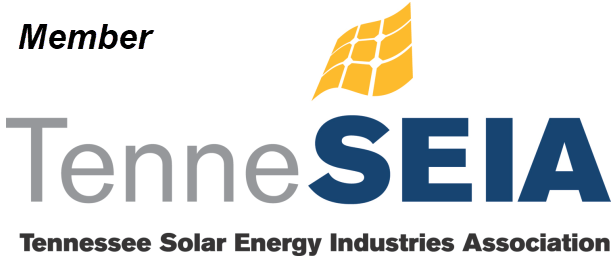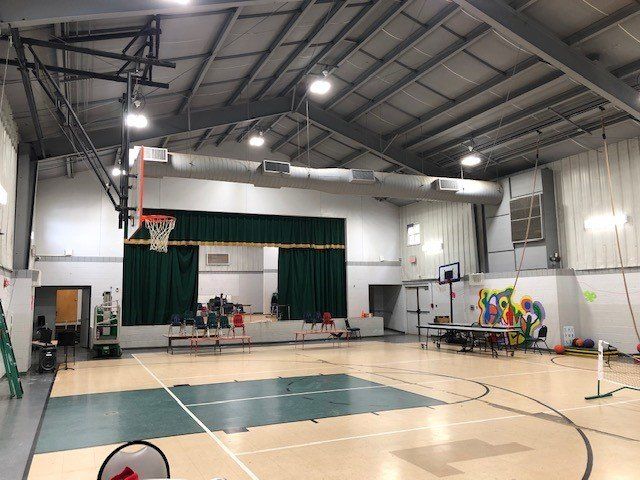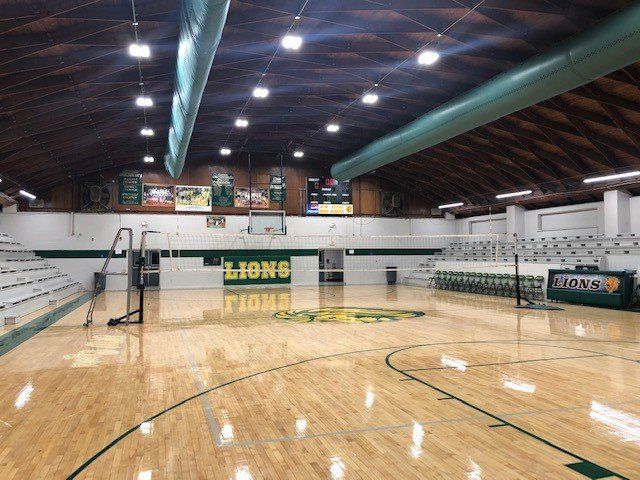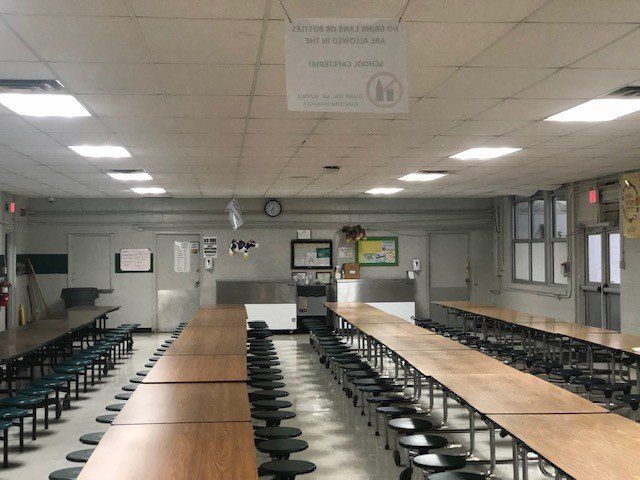H. W. Byers Attendance Center
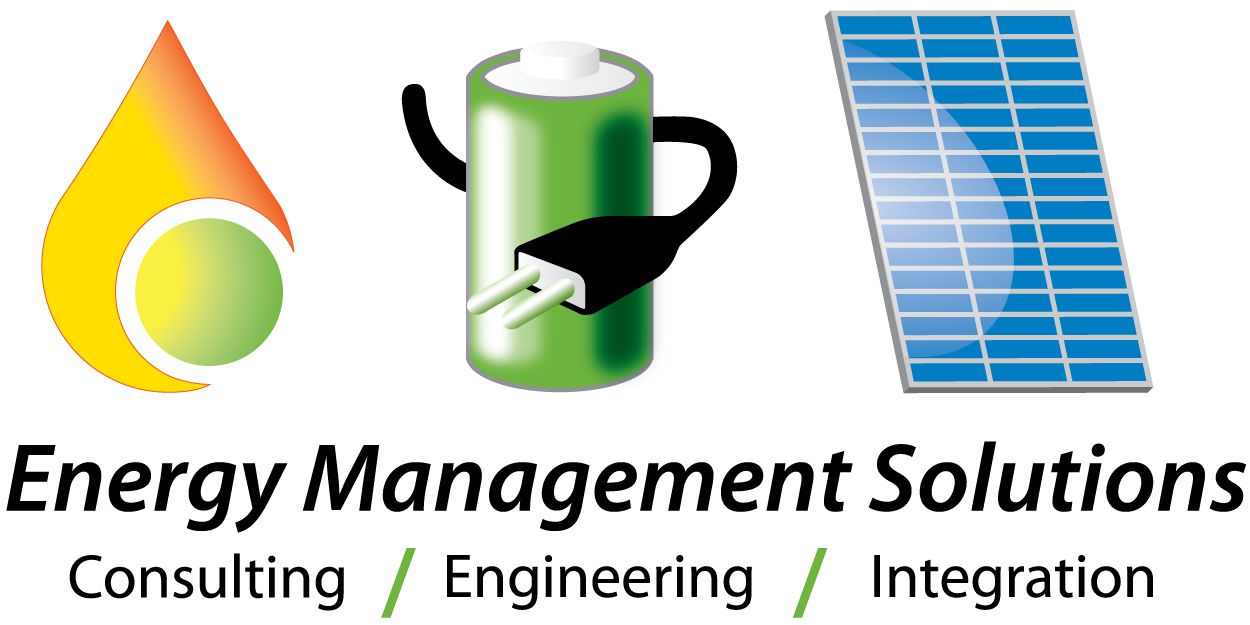
H. W. Byers Attendance Center
4178 Highway 72 East
Holly Springs, MS 38635
H. W. Byers is an attendance center located near Holly Springs, MS. It was originally built in 1958 and is comprised of several buildings following multiple additions. The buildings total 89,185 square feet of conditioned space.
It is of typical school design consisting of classrooms, front offices, a cafeteria with attached kitchen, and two gymnasiums. The school hosts approximately 600 students every year in grades K-12. The building operates 10 months out of the year, with two months of shutdown during the summer break.
Prior to the energy efficiency lighting upgrades, H. W. Byers was illuminated by T8 and T5HO fluorescent lamps, incandescent, CFL, HPS, metal halide, and a few LED lighting fixtures. There was no use of lighting controls, either external to or integral to any lighting fixture found within the attendance center.
At the elementary, middle, and high schools we implemented two very significant Energy Conservation Measures (ECM’s): (1) switching all lighting to LED and (2) installing dimmer switches and occupany sensors.
The results of these ECM’s were to:
• Reduce the school’s overall energy consumption
• Reduce unnecessary burn hours of fixtures
• Achieve significant energy cost savings
• Reduce lighting maintenance expenses
• Improve the quality of the learning environment with increased, uniform light levels and the capability of dimming and color tuning the classroom lights
We were able to achieve these results to a great extent by using Energy Focus dimmable LED lamps (15w, 2250 lumens output) with EnFocus Controls. Dimming and Color Tuning (2700K to 6500K) was accomplished by utilizing the existing circuitry and avoiding the expense and potential problems associated with a wireless network. Additionally, Energy Focus provides a 10 year warranty on lamps.
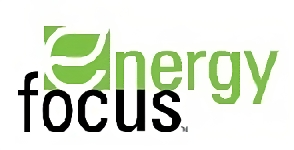
Energy Focus states….Our flicker-free LED lighting virtually eliminates health problems such as migraines, eye strain and fatigue closely associated with sitting under the flickering fluorescent lights commonly found in schools. Our LED lights can vastly improve the learning quality of students with special needs who are often subject to hypersensitivity to light and sound. LED technology provides a brighter, more accurate quality of light to improve learning environments and visual acuity while still reducing energy and maintenance costs.
Lighting the Way To Better Health and Success Through Human-Centric Lighting
Ever since Thomas Edison successfully commercialized the incandescent lightbulb more than a century ago, artificial lighting has become a critical technology for indoor activities.
As the fluorescent generation of lighting is giving way to LED, lighting technology is entering the next technological age characterized by Human-Centric Lighting (HCL) which is expected to vastly expand the impact of lighting on human health and wellbeing.
For schools, that means the most important constituents— students and teachers—will not just be visually receiving lighting but may also benefit from it like never before.
HCL aims to enhance the biological health and emotional wellbeing of people through advanced capabilities such as flicker-free, dimmable and color tunable or circadian lighting.
An obvious and persistent hazard of artificial lighting that HCL aims to remove is flicker. Flicker occurs as a result of modulating the current to artificial light sources, in particular fluorescent, which has been the primary lighting choice for classrooms since the 1950s. Flicker has shown to cause headaches, migraine, eye strain or fatigue, particularly for photosensitive individuals or those with scotopic sensitivity syndromes that hamper perceptual processing and reading.
With quality LED lighting, flicker can be largely removed, so much so that it could be considered “flicker-free.” Energy Focus pioneered the flicker free technology back in 2010 when we introduced our 10-year warranty TLED product line of flicker free lamps. Only a handful of manufacturers have the technology to deliver flicker-free solutions.
Another significant benefit of HCL is circadian lighting, which alters the color temperature and intensity of lighting by aligning our bodies with circadian rhythm. Circadian rhythms are those biological, mental and behavioral changes that respond to light and darkness in a daily, 24hour clock. In 2017, three scientists won a Nobel Prize for discovering the gene and the molecular mechanisms that control human circadian rhythm. They showed how light helps humans synchronize with the clock, further validating the working of circadian rhythm.
In the classroom, producing light with cooler, bluer color temperatures and higher intensity, mimics the sun’s daylight quality that induces dopamine, endorphin and cortisol while suppressing melatonin, which can promote higher visual acuity and mental focus, according to several studies. Towards the end of the day, lowering color temperature to more yellowish and dimming the light mimics the sunset spectrum, prompting calmer moods by inducing melatonin.
Constant exposure to artificial light is one of the key factors that affects sleep. Sleep is inextricably linked to cognitive development, so schools have a vested interest in promoting healthy sleep. Research published in Brain and Cognition has demonstrated that the frontal lobe, which enables rational thinking and critical decision making, takes deep sleep to accomplish the neural maturation required. Studies have also shown that sleep sets in motion the process of memory consolidation.
Students exposed to circadian lighting during learning times should be able to sleep better at night, according to research in Neuroendocrinology Letters, which can be a powerful tool for schools. In fact, studies have demonstrated significant improvements in learning efficiency and test scores under circadian lighting, including a study of elementary school students conducted by University of Mississippi showing a 33% increase in performance under circadian lighting compared with the control group.
Notably, there’s a double downside for students with Autism Spectrum Disorder (ASD) learning under flickering lights that also harm their circadian rhythms because their circadian rhythms are already weaker. According to research published in the Journal of Neurodevelopmental Disorders, it’s as if the day and night are far less bright and dark, respectively, with a flatter profile of melatonin secretion across 24-hour periods. Children with ASD are also more susceptible to extreme visual sensitivity where sharp peaks in light can jumble the signals to the brain. It can result in dizziness, headaches, nausea, and difficulty concentrating, according to International Journal of Clinical and Health Psychology. HCL may be particularly instrumental in helping to improve physiological health and behavior in students with ASD.
Additionally, advanced HCL capabilities such as circadian lighting requires lighting controls, which traditionally have been notorious for being inaccessible in existing buildings due to system complexity and prohibitive cost. For HCL to be massively impactful, it needs to be simpler to install, budget-friendly, intuitive to use, and easy to maintain. Fortunately, with the latest developments in LED lighting systems that incorporate advanced electronics, communication and software technologies, schools can now benefit from HCL solutions that leverage on existing fixtures and AC powerlines without the need of running new wire, introducing potentially insecure wireless communication protocols, or replacing the fixtures that could last multiple decades.
By replacing just the lamps and switches, schools can gain HCL benefits at a fraction of the time and cost while maximizing longterm sustainability by eliminating the solid waste from replacing the fixtures. There has never been a better time for schools to boost and transform health and performance of students and teachers by adopting HCL.
We are Energy Focus (Solon, OH) and we are leading the way on HCL.
